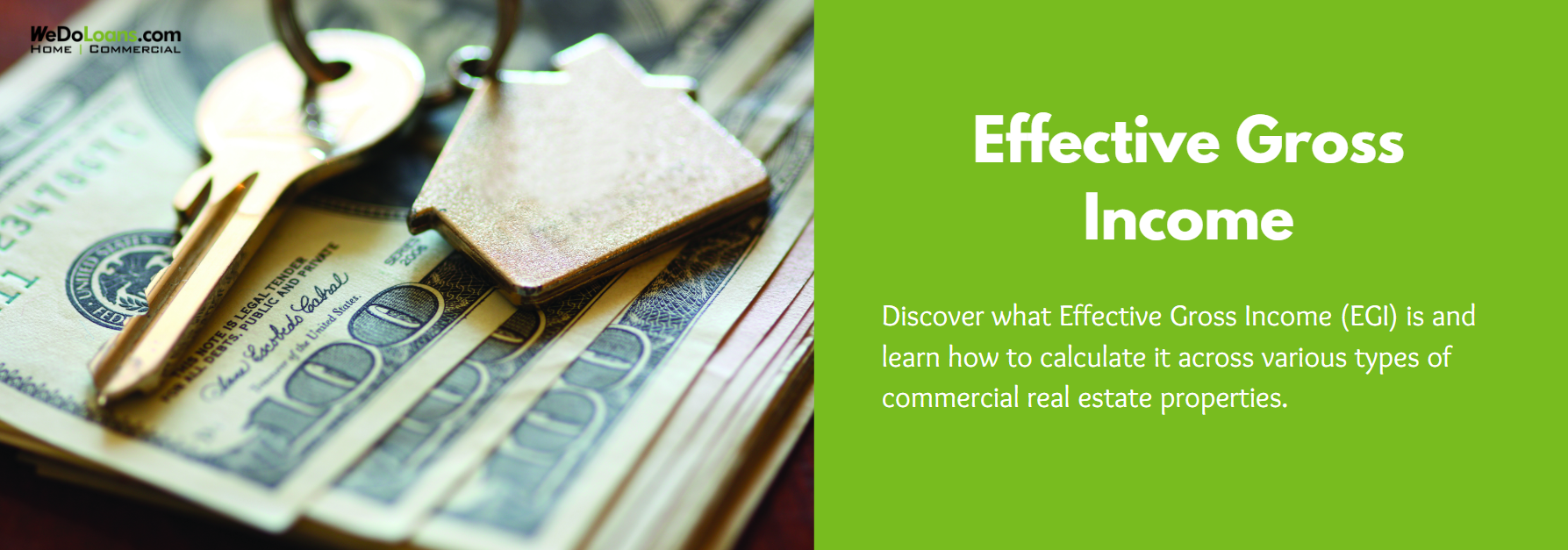
Estimating a commercial property’s potential income involves more than simply multiplying the monthly rent by twelve. This basic calculation overlooks additional income streams and potential costs, making it an incomplete reflection of the property’s true revenue potential. To get a more precise estimate, investors use Effective Gross Income (EGI), which accounts for both supplementary income sources and possible losses.
What Is Effective Gross Income (EGI)?
Effective Gross Income (EGI) is a measure of the realistic income potential of a commercial property. It factors in not only rental revenue but also ancillary income sources (e.g., parking fees, laundry revenue) and subtracts anticipated losses from vacancies and non-paying tenants.
Investors use EGI as a forward-looking metric to project income potential rather than simply recording past earnings.
Why Is EGI Important for Real Estate Investors?
Understanding EGI is essential for two key reasons:
1.Accurate Property Valuation:
EGI provides a clearer picture of the property’s actual income, ensuring a more precise valuation. Overlooking supplementary income or failing to account for losses can lead to inaccurate property assessments.
2. Meeting Lender Requirements:
Lenders often evaluate Net Operating Income (NOI) and pre-tax cash flow when underwriting loans. Since EGI is a key component of these calculations, accurately determining it is essential for securing financing.
Effective Gross Income Formula
To calculate EGI, the following formula is used:
EGI = Rental Gross Potential Income (GPI) + Other Income − Vacancy Costs − Credit Losses

Where:
- Rental GPI = The total potential income if all units were fully rented for the year.
- Other Income = Revenue from non-rental sources, such as parking, storage, or service fees.
- Vacancy Costs = Income lost due to unoccupied units.
- Credit Losses = Rents that tenants fail to pay.
Example 1: Multifamily Property
Imagine a multifamily property with 20 units renting for $800 per month.
- 10 tenants pay an additional $50/month for extra parking.
- 10 tenants pay $40/month for basement storage.
- On average, tenants spend $20/month on the coin-operated laundry machines.
- The property has a 5% vacancy rate and one tenant typically misses two months’ rent annually.
EGI Calculation:
- Rental GPI:
20 units × 800 × 12 = 192,000
- Other Income:
(500 parking + 400 storage + 400 laundry) × 12=15,960
- Vacancy Costs:
192,000×0.05=9,600
- Credit Losses:
800×2=1,600
EGI=192,000+15,960−9,600−1,600=196,760
Example 2: Retail Shopping Center
Consider a shopping center with 50,000 square feet of space rented at an average of $4/sq ft.
- Other Income: $100/month from vending machines and $500/month from parking.
- Vacancy Rate: 5%
- One tenant renting a $3,000/month unit is behind on rent.
EGI Calculation:
- Rental GPI:
50,000 × 4 × 12 = 2,400,000
- Other Income:
(100 + 500) × 12 = 7,200
- Vacancy Costs:
2,400,000 × 0.05 = 120,000
- Credit Losses:
3,000×12=36,000
EGI=2,400,000 + 7,200 − 120,000 − 36,000 = 2,251,200
Key Considerations When Calculating EGI
- Local Market Conditions: Changes in rental demand or new developments in the area can impact rents and vacancies, influencing EGI projections.
- Economic Trends: Factors like employment rates, population growth, or economic downturns can affect tenant stability and income potential.
- Forward-Looking Metric: Since EGI is a forecast, it’s essential to base projections on realistic assumptions using market data.
Conclusion
Accurately calculating Effective Gross Income (EGI) is essential for making informed investment decisions in commercial real estate. By considering potential income, ancillary revenue, and anticipated losses, investors can better evaluate property performance and make smarter financial decisions.
